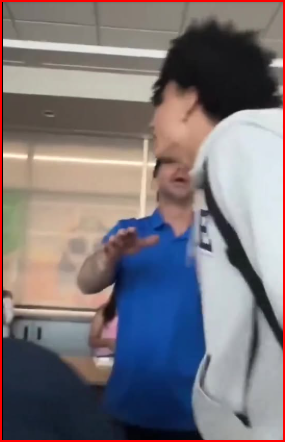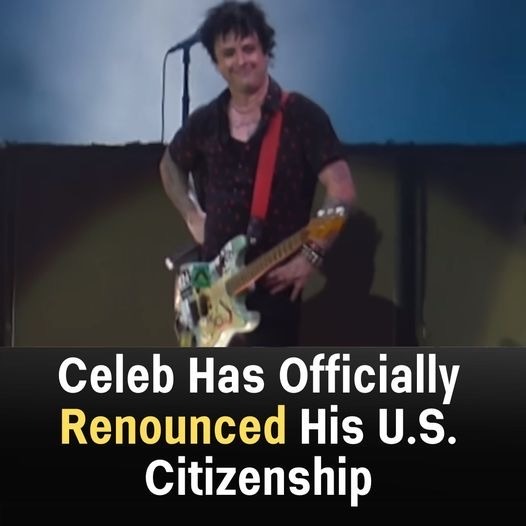Schools are designed to be places where students can learn, grow, and prepare for their futures. Yet recent events across the United States have raised unsettling questions about just how safe these environments really are. One such case, captured on a student’s phone and circulated widely online, shows a school resource officer pointing his firearm at a teenager suspected of carrying a weapon on campus.
The video quickly spread across social media, drawing millions of views and sparking a debate far beyond the school’s walls. No one was physically harmed, but the image of an officer aiming his weapon at a student in a crowded hallway has left parents, educators, and community leaders struggling with difficult questions about safety, policing, and student well-being.
This article examines the incident, the immediate response, the wide range of community reactions, and the broader policy questions it raises for schools across the nation. It also explores the ongoing challenge of balancing security with student rights and mental health.
The Confrontation
The now-viral footage shows a tense hallway standoff. Acting on reports that a student might be armed, the officer drew his service weapon and ordered the teenager to the ground.
The student, visibly unsettled, did not immediately comply. Instead, he questioned the officer’s commands: “What do you want me on the ground for?” Other students either fled the scene or continued filming in shock. Official reports later confirmed that administrators had received credible information that the student might have a firearm, prompting the officer to act out of caution.
The Immediate Aftermath
The incident ended without violence. The officer detained the student, and a firearm was recovered. The 16-year-old was taken into custody and now faces charges related to unlawful possession of a firearm on school grounds.
School leaders moved quickly to activate safety protocols, including:
- Locking down classrooms
- Alerting law enforcement and parents
- Offering counseling and emotional support
While some praised the efficient response, others worried about the trauma inflicted on students who witnessed the event.
Parents’ and Students’ Reactions
The community’s response was divided. Parents expressed both relief and unease.
One parent noted:
“I am thankful that nothing tragic happened, but it is deeply unsettling to know that my child’s school is a place where weapons are found and officers feel the need to draw their guns.”
Students also voiced mixed emotions. Some felt reassured by the officer’s quick action, while others admitted they were shaken by the sight of a gun drawn inside their school.
Educator and Community Perspectives
Educators and community leaders offered contrasting views.
- Supporters argued that decisive action may have prevented a tragedy.
- Critics warned that pointing a firearm at a teenager in a crowded hallway risked escalating the situation.
- Mental health advocates emphasized prevention, calling for counseling, mentorship, and early intervention to address problems before they reach a crisis point.
The Larger Debate: Police in Schools
The confrontation has reignited debate over whether armed officers belong in educational settings.
Arguments for School Resource Officers (SROs):
- Their presence deters violence.
- They provide rapid response during emergencies.
- Some programs encourage officers to act as mentors.
Arguments against SROs:
- Firearms in schools may increase risks.
- Students of color are disproportionately affected by discipline and arrests.
- Their presence can create an atmosphere of fear rather than safety.
A Growing Trend of Firearms in Schools
Beyond this single case, data shows a troubling increase in firearms being brought onto campuses nationwide. Factors include:
- Greater access to guns in homes
- The spillover of community violence into schools
- Rising mental health challenges among youth
- Social media influence and viral trends
Experts argue that solutions must go beyond policing, focusing instead on prevention, early intervention, and building positive school climates.
Psychological Impact on Students
Witnessing such events can leave lasting marks on young people, including:
- Anxiety about returning to school
- Difficulty focusing in class
- Distrust of authority figures
- Trauma requiring professional care
Schools must now protect not just physical safety but also the emotional well-being of students.
What’s Next
The student involved is set to appear in juvenile court, where outcomes could range from counseling to more serious penalties. School officials have promised a review of safety policies and will consult with law enforcement on whether to expand surveillance, revise training, or introduce alternative de-escalation strategies.
Key Lessons for School Safety
This incident highlights several takeaways for communities nationwide:
- Preparedness matters: Schools must maintain clear safety protocols.
- Prevention is vital: Identifying warning signs early can stop crises before they escalate.
- Balance is essential: Security should not come at the cost of a supportive learning environment.
- Voices count: Students, parents, and educators must be included in policy decisions.
Conclusion
The image of a police officer pointing a firearm at a teenager has become a flashpoint in the national conversation about school safety. For some, it symbolizes quick action that prevented disaster. For others, it underscores the risks of escalation and the psychological toll of policing in education.
As legal proceedings unfold and safety policies are reassessed, the larger debate will continue: How do we keep schools secure while protecting student rights and mental health? How do we prevent violence without sacrificing the nurturing spirit of education?
This incident is a stark reminder that school safety is not a single issue, but a complex challenge requiring cooperation, compassion, and long-term commitment.

